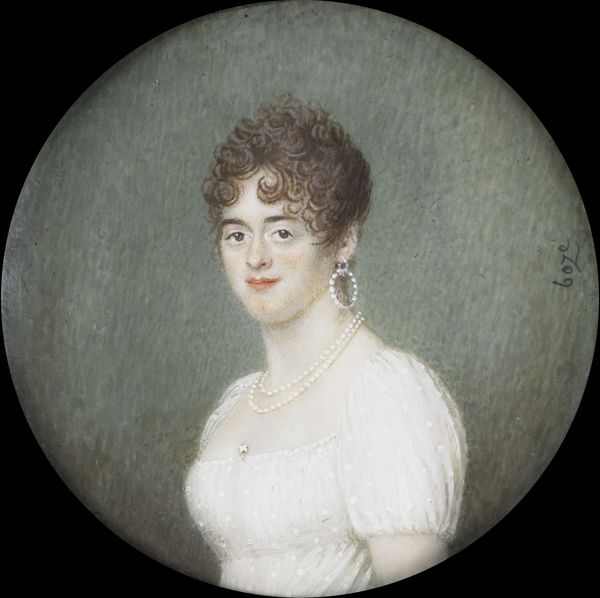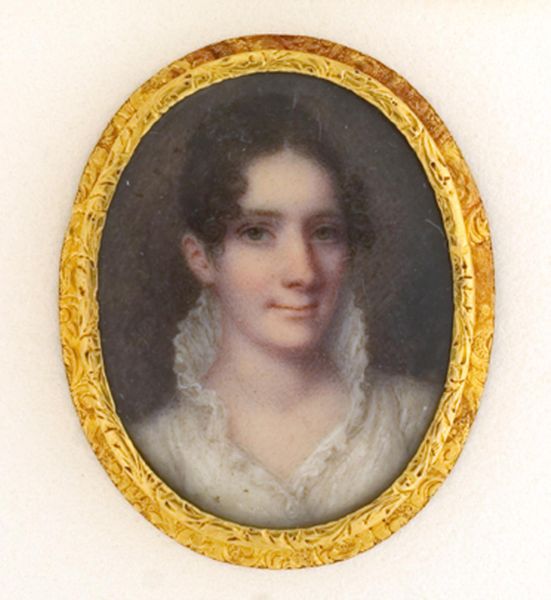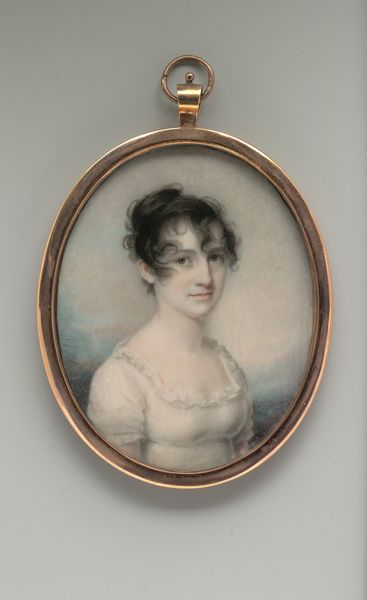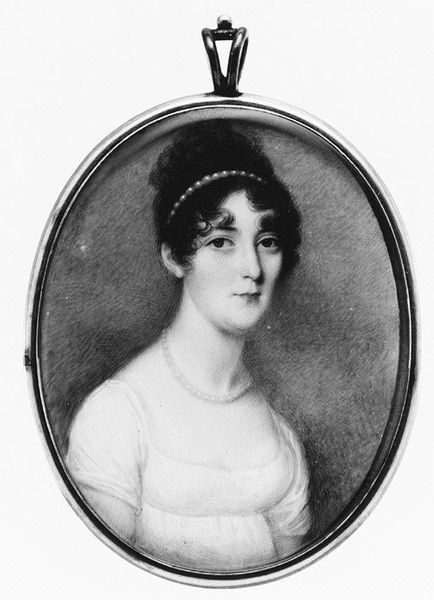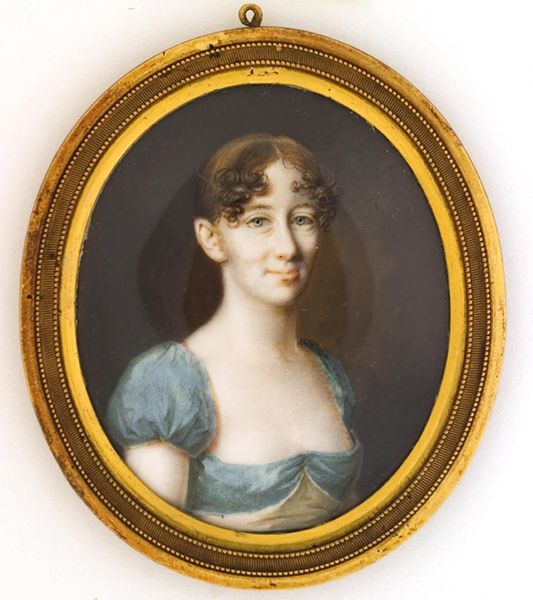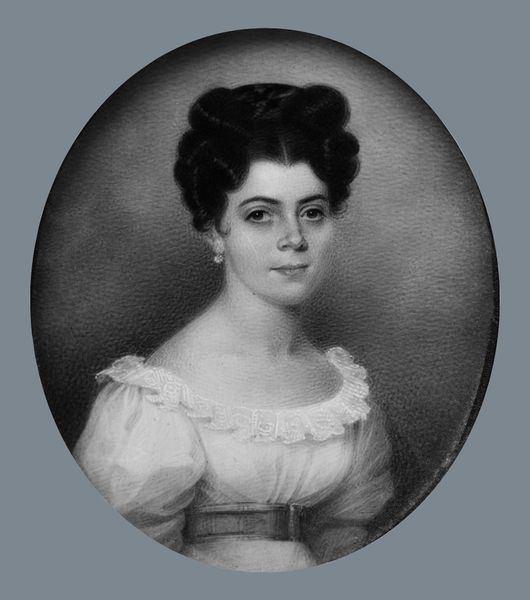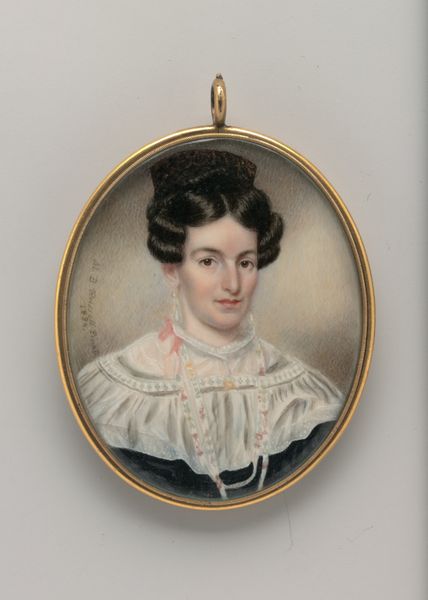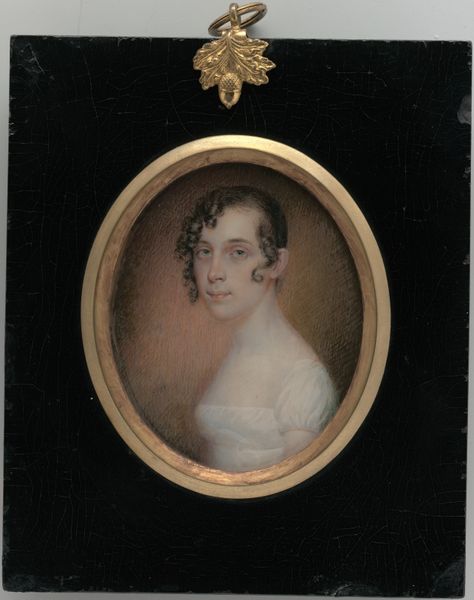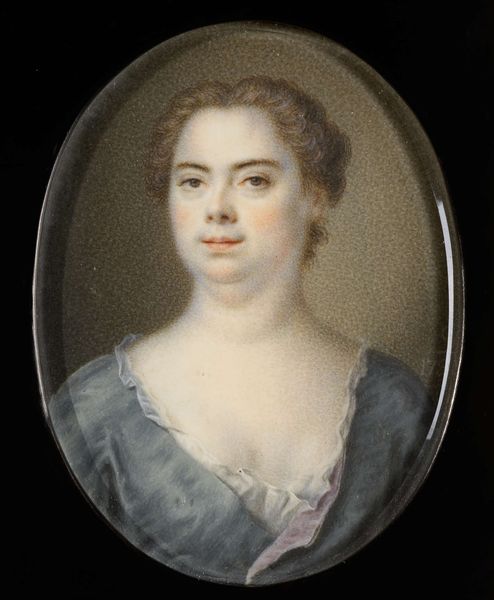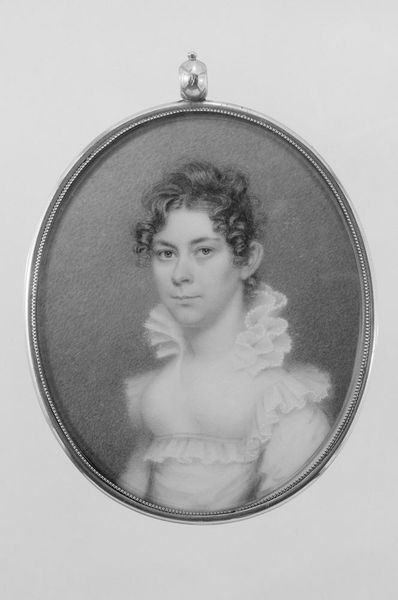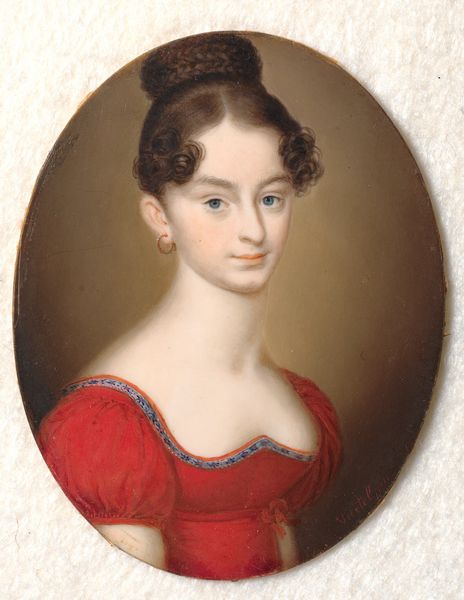
Portrait of Maria Cornelia Pull (d 1809). Wife of Gerrit Jan van Houten 1790 - 1810
0:00
0:00
painting
#
portrait
#
neoclacissism
#
painting
#
sculpture
#
history-painting
#
academic-art
#
miniature
Dimensions: height 12.3 cm, width 11.7 cm, depth 0.7 cm
Copyright: Rijks Museum: Open Domain
Curator: Let’s take a closer look at this exquisite miniature, “Portrait of Maria Cornelia Pull, Wife of Gerrit Jan van Houten.” The piece is attributed to Joseph Boze, and it likely dates from sometime between 1790 and 1810. Editor: What strikes me immediately is its intimate scale and quietness. There's a softness to her gaze that's really compelling, a kind of private pensiveness you don't always get in larger portraits. Curator: Indeed. The scale and portability of these miniatures are key. Think about how significant they were during this period—offering ways to remember loved ones, demonstrate status, or be presented as diplomatic gifts. Miniatures moved within social and political circles in ways larger artworks simply couldn't. Editor: And the details packed into this small space! The pearl earrings and necklace, the way the light catches her white dress—it feels like more than just representation; it’s an attempt to capture a sense of her personality and social standing. Curator: Precisely! Neoclassical portraiture, even on this intimate scale, was strategic. Boze, like other artists of the time, was careful in conveying virtue, taste, and social identity. Consider the composition: she's positioned to subtly display her wealth through these carefully rendered adornments and fashionable attire. The Van Houten family was, no doubt, very concerned with preserving and presenting a particular image. Editor: I imagine that this small image becomes a cherished token, a conversation piece displayed within a home, becoming so personal and full of memories over time. I can almost feel the texture of the frame. Curator: And let's remember Boze’s background—famed for his portraits of royalty and aristocracy before, during, and after the Revolution. It places this image within a complex historical web, showcasing the artistic exchanges and power dynamics of the era. Editor: Looking at it now, I am transported to imagine it hanging in their home and a sense of her presence—gentle, assured—preserved within this miniature world. Curator: Absolutely. The painting embodies significant aspects of social history, and seeing this miniature enriches our understanding of identity and representation in late 18th-century Dutch society.
Comments
No comments
Be the first to comment and join the conversation on the ultimate creative platform.
